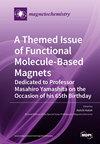基于金属二噻吩配合物的单组分分子导体中Dirac锥的形成
IF 2.6
4区 化学
Q2 CHEMISTRY, INORGANIC & NUCLEAR
引用次数: 0
摘要
单组分分子导体表现出与狄拉克电子系统的强连接。单组分分子导体中狄拉克锥的形成取决于(1)HOMO和LUMO带的交叉以及(2)HOMO–LUMO耦合中节点的存在。在这项研究中,我们使用紧密结合模型和第一性原理密度泛函理论(DFT)计算,研究了由具有扩展的四硫富瓦烯二硫代配体[Ni(tmdt)2]和[Ni(btdt)2]的镍配合物衍生的两种单组分分子导体中形成狄拉克锥的可能性。紧密结合模型预测了两个系统中狄拉克锥的出现,这与拉伸键型分子排列有关。DFT计算还表明在两个系统中都形成了狄拉克锥。在[Ni(btdt)2]的情况下,采用vdW-DF2函数的DFT计算揭示了在结构优化后在非磁性状态下在费米能级附近形成狄拉克锥。此外,DFT计算,通过利用范围分离的混合泛函,证实了实验观察到的[Ni(btdt)2]中的反铁磁稳定性。本文章由计算机程序翻译,如有差异,请以英文原文为准。
Dirac Cone Formation in Single-Component Molecular Conductors Based on Metal Dithiolene Complexes
Single-component molecular conductors exhibit a strong connection to the Dirac electron system. The formation of Dirac cones in single-component molecular conductors relies on (1) the crossing of HOMO and LUMO bands and (2) the presence of nodes in the HOMO–LUMO couplings. In this study, we investigated the possibility of Dirac cone formation in two single-component molecular conductors derived from nickel complexes with extended tetrathiafulvalenedithiolate ligands, [Ni(tmdt)2] and [Ni(btdt)2], using tight-biding models and first-principles density-functional theory (DFT) calculations. The tight-binding model predicts the emergence of Dirac cones in both systems, which is associated with the stretcher bond type molecular arrangement. The DFT calculations also indicate the formation of Dirac cones in both systems. In the case of [Ni(btdt)2], the DFT calculations, employing a vdW-DF2 functional, reveal the formation of Dirac cones near the Fermi level in the nonmagnetic state after structural optimization. Furthermore, the DFT calculations, by utilizing the range-separated hybrid functional, confirm the antiferromagnetic stability in [Ni(btdt)2], as observed experimentally.
求助全文
通过发布文献求助,成功后即可免费获取论文全文。
去求助
来源期刊

Magnetochemistry
Chemistry-Chemistry (miscellaneous)
CiteScore
3.90
自引率
11.10%
发文量
145
审稿时长
11 weeks
期刊介绍:
Magnetochemistry (ISSN 2312-7481) is a unique international, scientific open access journal on molecular magnetism, the relationship between chemical structure and magnetism and magnetic materials. Magnetochemistry publishes research articles, short communications and reviews. Our aim is to encourage scientists to publish their experimental and theoretical results in as much detail as possible. Therefore, there is no restriction on the length of the papers. The full experimental details must be provided so that the results can be reproduced.
 求助内容:
求助内容: 应助结果提醒方式:
应助结果提醒方式:


